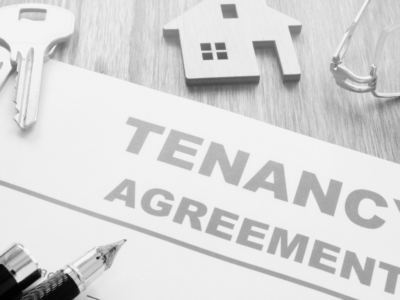As the Building Safety Bill passes through the House of Lords, new amendments are being made weekly, all of which will affect the running of property businesses and the work of building managers.
The Bill outlines legislation on how residential buildings should be constructed, maintained and made safe. These reforms are designed to give residents and homeowners more rights, powers, and protection and have been developed due to the Grenfell Tower fire.
All building owners must follow these new reforms to comply with the law.
What changes have been made to building safety legislation?
Just last month, the UK government revealed strict new measures to force the industry to pay to remove defective cladding and protect leaseholders from high remediation costs.
The Bill introduces a new regulator, the Building Safety Regulator, positioned within the HSE, with the ability to enforce these new regulations for high-rise buildings and oversee the safety and performance of all buildings.
As part of the new measures, this new regulator will now be able to block planning permission and building control sign-offs on developments for those not following the new measures.
This legislation will effectively prevent developers from building and selling new homes until they comply with the legislation.
The changes also state the industry will pay to fix historical problems so leaseholders don’t have to.
Cladding companies can also be sued and be subject to fines for defective products.
Initially, the Bill introduced new roles for building safety management.
However, on 23rd March this year, Ministers scrapped the legal requirement for building owners to appoint a Building Safety Manager, with industry leaders agreeing with the move due to the high costs incurred by the role.
Many businesses have already appointed Building Safety Managers as a result of the Bill, but the new measures mean the responsibilities of this role will now land with the role of the Accountable Person instead.
The changes also confirmed that leaseholders won’t be charged for cladding work, including those who own up to three properties and those with low-value properties.
What does this mean for businesses?
Building owners
Accountability is one of the biggest pillars of the new Bill, with the creation of the Accountable Person role, which entails being responsible for assessing building safety risks and preventing and controlling the impact of a significant incident around the building.
The Building Safety Bill outlines an Accountable Person as: “A person who holds a legal estate in possession in any part of the common parts” or, if not legally owned, a person “Who is under a relevant repairing obligation in relation to any part of the common parts”.
The role of the Accountable Person could be fulfilled by an individual, partnership or a corporate entity such as a property management company.
While the belief is the Bill won’t come into force until 2024, work needs to be done by relevant businesses to ensure they comply with the measures when it does.
The Accountable Person has to keep a ‘golden thread’ of data about higher-risk premises, providing detail on how the building is designed, built and operated.
This should include the fire safety measures in place, all in one digital document.
While initially, the Bill required the role of a Building Safety Manager, the new amendments have designated the Accountable Person for the building the responsibility to ensure all the necessary arrangements are in place to meet obligations under the Bill.
The construction industry
The Building Safety Bill will also affect other pieces of legislation, such as the Defective Premises Act 1972, which provides statutory rights to owners of dwellings that are “unfit for habitation”.
The Bill proposes an extension of the period within which legal action can be brought for sub-standard construction work on residential buildings, applied retrospectively from six years to 15.
The Bill also proposes three gateway points for the design, construction and completion phases of high rise residential buildings:
- Gateway 1 – Planning permission – the application has to demonstrate that fire safety requirements have been considered and incorporated
- Gateway 2 – Pre-construction gateway – the regulator must approve the design as compliant with building regulations
- Gateway 3 – Completion gateway – the regulator will only issue a completion certification once they’re satisfied that the work is compliant with building regulations
A project can be halted at any of these three stages unless demonstrating compliance with the Building Regulations.
These changes mean that construction companies will be vulnerable to claims long after the completion of projects when their work may have met the regulations at the time.
Construction companies will also have to consider the insurance they need as they can no longer rely on limitations to defend against these claims.
It’s uncertain when The Building Safety Bill will get royal assent.
Still, businesses in the industry must make themselves aware of its intentions and the impact it’ll have as soon as possible.
A new era for building safety
Although the Building Safety Bill will require significant shifts in the development and maintenance of residential buildings, there’s no doubt it’s for the greater good.
The Grenfell Tower incident stands as a solemn reminder that more considered building construction is necessary to eliminate all preventable casualties and correctly place accountability on those responsible for the safety of a building.
With new changes being made to the Bill every day, it’s impossible to know exactly what impact it’ll have on affected businesses.
One thing is for sure; the Bill will be instrumental in ensuring the ultimate safety of high-rise buildings, of which there are more than 12,000 in the UK.






















Comments